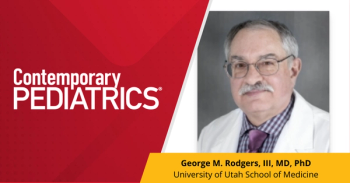
How do parents handle their child’s belly pain?
Based on results from a recent C.S. Mott Children’s Hospital National Poll on Children’s Health, find out how comfortable parents feel when it comes to abdominal pain in their child, and how likely they are to handle the issue themselves, or to reach out to a health care provider for help.
In a recent C.S. Mott Children’s Hospital National Poll on Children’s Health, parents of children aged 3 to 10 years opened up about how they handle their child’s belly pain. Common among this age group, belly aches can be a symptom o fseveral illnesses, meaning parents can find it difficult to identify the cause and the relief regimen for their child’s pain.
Among the survey of 2100 randomly selected, stratified adults that were parents of at least 1 child (aged 0 to 18 years) living in their respective household, 17% reported that their child complains of belly pain at least once per month. Fifty-eight percent of these parents have talked about the frequent pain with the child’s doctor. Belly aches “a few times a year” among their child was reported by 31% of parents while 52% said their child rarely or never complains about belly pain.
When it comes to being able to tell if belly pain in their child “might be a sign of a serious problem,” 37% of parents rated themselves as “very confident.” Eighty-four percent of parents are very likely to contact the doctor or seek emergency care if their child’s belly pain includes blood in the stool, 65% are very likely to contact the doctor if a “sharp” pain is felt in the child, 64% if pain lasts over 6 hours, 63% when the belly is swollen, or hard (49%). If their child has a fever or diarrhea, 22% and 8% of parents would seek advice or care, respectively.
To determine the cause of the pain in their child, 69% of parents would have the child describe the pain, 47% would see if the child can go on with regular activities, 43% of parents would take the temperature of the child, 41% would ask the child to lie down to see if pain improves, and 34% would be “probing the child’s belly to see where it hurts.” Most parents (73%) believe the pain is likely caused by gastrointestinal symptoms such as indigestion, gas, and constipation, while 35% believe a virus or infection would be a prior cause. When it comes to over-the-counter (OTC) products, 30% of parents reported they are “very likely” to disperse these products for belly pain. According to the poll, 13% would give probiotics, 13% would give medicine for an upset stomach, 12% would give pain relievers, and 8% would give their child a stool softener.
Approximately one-quarter (27%) of parents believe their child’s pain is a result of worry and anxiety, trying to avoid school, or trying to get attention. Parent answers for this belief were more common for parents of children aged 6 to 10 years and 3 to 5 years (34% vs 20%, respectively). In most cases (71%), parents discuss the cause of anxiety with their child while 53% require the child to do breathing or relaxation exercises. Over half (53%) attempt to distract their child, but few parents (16%) let their child “miss school or other activities that may be related to worry,” according to the poll.
About one-third of parents in this poll said they would use OTC products for abdominal pain. While some products can ease pain and discomfort, others could be counterproductive. According to the poll, active ingredients in some “upset stomach medications is bismuth which slows down gut motility; while this would be helpful in limiting the course of diarrhea, it may slow the process of recovery from a viral infection and may lead to constipation in children.” Belly pain could be a sign of a “more serious problem,” like appendicitis, bowel obstructions, or urinary tract infections. For boys, testicular problems like hernias could be a more serious result of belly pain. According to the poll, “The most concerning signs include sharp intense pain, blood in the stool, and a hard/swollen belly; parents should seek care rapidly if they notice any of these signs.” Pain that keeps the child from continuing with normal activities, pain that gets worse over time, that wakes up the child at night, that “emanates from the belly button to the lower right side of the abdomen (which could indicate the presence of appendicitis), pain that lasts over 24 hours, or pain that is accompanied by vomiting or difficulty swallowing,” are all other signs of a potentially serious problem.
Even if there are no serious signs, parents should monitor the frequency of their child’s belly pain, as 4 in 10 parents that reported belly pain from their child at least once a month have not spoken to their doctor about his issue. According to the poll, if belly pain is causing the child to complain at least once a month, parents should keep a record of frequency and discuss the characteristics of the pain with a doctor at the child’s next visit. It is an essential task for the parent to encourage the child to explain the cause of their concern and to allow them to share their feelings without “discounting or minimizing the child’s fears.” If anxiety-related belly pain complaints happen frequently, input from a behavioral specialist can help parents manage symptoms, as more than 1-quarter of parents in the poll reported suspected instances that belly pain in their child was because of worry or anxiety.
Reference:
Tummy troubles: How parents deal with their child’s belly pain. National Poll on Children’s Health. June 19, 2023. Accessed June 20, 2023. https://mottpoll.org/reports/tummy-troubles-how-parents-deal-their-childs-belly-pain
Newsletter
Access practical, evidence-based guidance to support better care for our youngest patients. Join our email list for the latest clinical updates.












